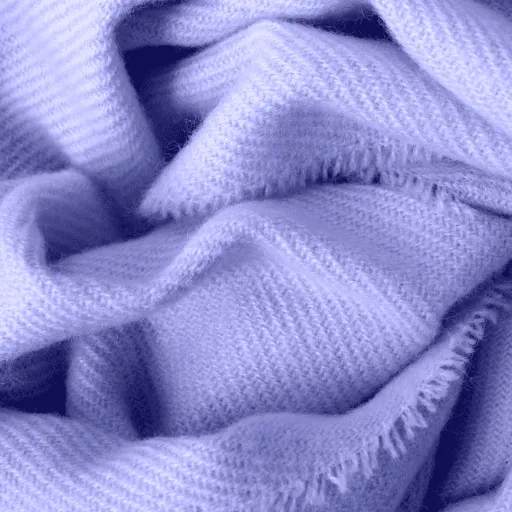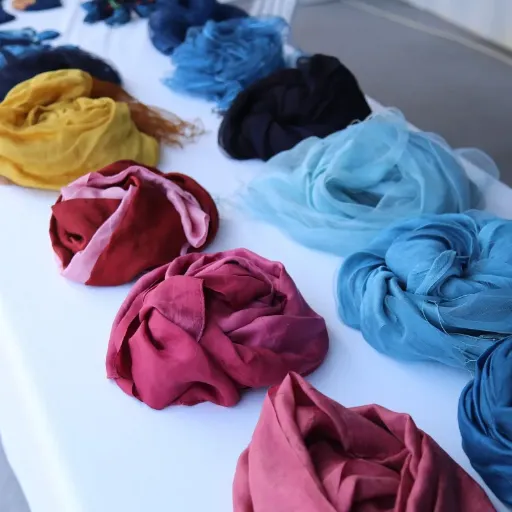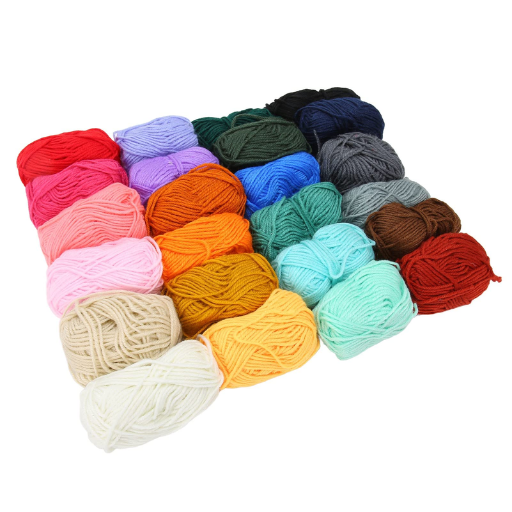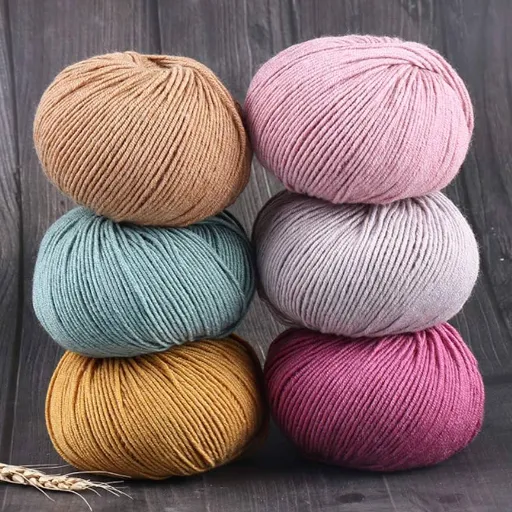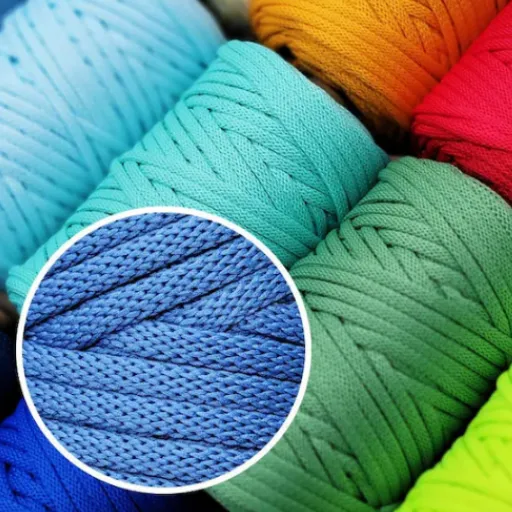One of the highly versatile and in-demand man-made textile fibers of today is the acrylic fiber. Largely due to its robustness, light weight, and wool-like texture, acrylic makes an ideal choice for a wide variety of items used indoors or out, from winter sweaters to outdoor fabrics. But what actually is the acrylic fiber and how does it compare to other fabric types? This comprehensive guide will take you through the ins and outs of every little thing you will need to learn about acrylic: the beginnings, the production processes, the benefits, the drawbacks, going all the way through a glance at sustainable alternatives. If you are one of those speculating on its qualities in clothing, furnishing fabric, or in craft projects, this article will give you insight to make informed decisions while dealing with this multitalented fabric. Let’s unfold the story of acrylic fiber and its consequent effect in the textile industry!
Understanding Acrylic and Its Composition
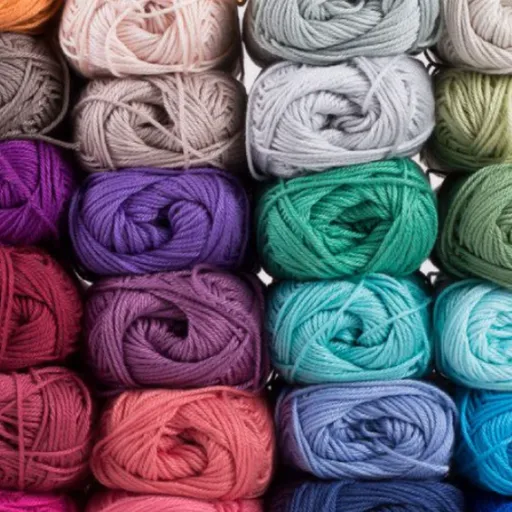
What is Acrylic Made Of?
Mostly made from the polymer called polyacrylonitrile, acrylic is a synthetic fabric. By polymerizing onto the precursor acrylonitrile, produced alternatively either by reaction of propylene and ammonia or as off-gassing from cracking gases, it actually forms the highly important polymer. It can typically be blended with various monomers in manufacture to improve certain properties of the fiber.
These fibers of acrylic fibers tend to be durable, lightweight, with a little good body, and their best is wrinkle and shrink resistance. Acrylics so closely model the look and feel of wool that many commercial applications of acrylics will use the fibers when wool is too expensive. For a garment, this same property has made it a high-value fiber when retention of bright, Massey colors is important.
Acrylic has the versatility to go way beyond clothing; it is used in home furnishing, upholstery fabrics, and even outdoor equipment, bearing resistance against sunlight and water. However it is made from polymers derived therefore petroleum, which raises all environmental concerns, and environmental considerations and social values must be given equal importance while using it…
Chemical Structure of Acrylic
Acrylics are types of synthetic polymer composed of acrylonitrile, a derivative of propylene. It is added to lengthy carbon chains containing fairly regular arrangements of carbon atoms, single bonds alternating with double bonds, besides any other groups like nitrile groups (from the CN group) appended. They are believed to lend the binding, which has given rise to distinctive features associated with acrylates.
The process is based on the polymerization of acrylonitrile monomers (single unit of the macromolecule), often in minor proportions as copolymers of the minor backbone of units of other monomers like methacrylate, methyl acrylate, and exclusive of other various combinations. These monomers play a role in the improvement of the dyes’ moisture-absorbing characteristics along with a valuable measure of flexibility. They find application over a broad range, from heavy chemicals to textiles.
Due to its chemical nature, acrylic is highly resistant to degradation and exhibits a strong resistance to UV light. Nonetheless, such stability shows that it is not biodegradable which means problems for the environment. Recycling and sustainable methods of production are certainly essential in addressing all these concerns while sustaining gains from a diverse range of materials properties.
Raw Materials Used in Acrylic Production
In the production of acrylic plastic, petrochemicals such as acetone and propylene are used as the most significant raw materials. These substances are then used to manufacture methyl methacrylate (MMA), which then becomes the basic polymer in acrylic plastics. MMA is a highly transparent, thermoplastic polymer having excellent mechanical and optical properties.
Catalysts and initiators, essential in initiating and controlling the polymerization process, are yet to come. Without these catalysts, the propagation would not be facile with the interactions necessary for conjugation. There are also some additives such as stabilizers, pigments, or UV blockers used for some purposes in order to give the plastic an advantage in certain applications such as resistance to light degradation or improved color.
Types of Acrylic Fiber and Fabric

Different Types of Acrylic Fiber
Acrylic fiber is a man-made polymer fiber formed from acrylonitrile. Acrylic fiber is light, warm, and durable, so it is often a wool substitute for a number of uses. Variety exists with acrylic fibers, each well-suited to some specific need and application. Given below is a somewhat more fulsome examination of the major types of acrylic fibers, with some of the recent data on their use and development:
Standard Acrylic
Standard acrylic fibers are multipurpose in use and find an active role in a wide variety of textile applications such as apparel, home furnishings, synthetic yarns for knitting, etc. Such fibers give lasting heat insulation and benefit from being moth-resistant. The latest reports show that demand for standard acrylic has continued steadily in colder parts because of its wool-like looks and practical affordability.
Modacrylic
Modacrylic fibers are acrylic fibers that have been modified to improve their resistance to flammability, to increase their strength to extend their lifespan. These fibers are traditionally encountered in such items as wigs, faux fur, carpets, and protective clothing. Recent trends in the market have shown a remarkable incline towards modacrylic fibers regarding applications with a high demand for flame resistance, especially for the purpose of safety and firefighting apparel.
The Production of Microacrylic Fiber
Microacrylic fiber is extremely soft and microscopically slender, rendering it luxurious to the touch like ultra-expensive cashmere. This type of acrylic fiber is mostly used in high-fashion wear, baby clothing, and luxury home textiles. Some recyclers of textiles are combining recycled microacrylic fibers in their product lines to promote environmental benefits.
Tow and Staple Fibers
Tow fibers are long-stretched acrylic molecules applied usually to carpet and upholstery production, while staple fibers are generally shorter and find spun into yarn for knitting and weaving. According to some reports emanating from the industry, the automotive and home furnishing sectors are becoming rather fond of acrylic tow fibers because of their high tolerance to wear and maintainability.
Solution-Dyed Acrylic
environmental exterior performance solution-dyed process entails coloring the acrylic fiber while it is being made, thereby making that color staunch against fading and weather conditions. It is a good choice for outdoor fabrics, such as awnings, outdoor furniture, and marine, which could withstand full sunshine and atmospheric exposure. In one of the recent reports, the solution-dyed acrylic fabrics have seen quick acceptance, thanks to their UV-resistance and environmental exterior performance characteristics.
Many industrial uses incorporate acrylic fibers due to their low cost, versatility, and excellent properties. Various types of acrylic fibers increase the range of applications and render these substances most useful in current-day manufacture.
Acrylic Fabric Variations
Essentially, acrylic fabrics are made in different varieties to cater to particular uses and meet singular demands. The most common types that are used include general acrylic fabric, modacrylic, and acrylic that has been dyed in solution. General acrylic is mainly preferred in the fields of clothing and home textiles as it provides a soft texture, with wool-like properties, making it ideal for sweaters, scarves, and blankets. Another characteristic that increases its popularity is its cost-effectiveness and ease of manufacture.
Conversely, modacrylic tends to act in resistance to flame and also possesses its inclusion in being strong in strength. With this quality, the textile has gained a suitable projection towards industrial use, protective clothing, and upholstery. Furthermore, still in consideration of being lightweight, modacrylic is strongly resistant to most kinds of weathering which would imply that it is also practical for outdoor and safety-related uses.
Solution-dyed acrylic is especially recommended for maximum UV and color fastness resistance. They are used in many outdoor applications, including awnings, boat covers, and outdoor furniture. It is expected to be an ultra-light but water-resistant, heat-deflection acrylic with the highest rate of lightfastness. The solution-dyed acrylic fiber tapestries and fabrics are formed aesthetically by blending selected gemstone or lime structures in color with brilliant pigments. Then, with the advent of innovations in this acrylic, the impetus for the plastics marketing transformed in terms of what had seemed reasonable possibilities.
Comparison with Other Textile Fibers
Compared to other textile fibers, solution-dyed acrylic offers superior lightfastness, weather resistance, and aesthetic versatility.
| Parameter | Solution-Dyed Acrylic | Cotton | Polyester | Nylon |
|---|---|---|---|---|
| Lightfastness | Excellent | Poor | Moderate | Moderate |
| Weather Resistance | Superior | Low | High | Moderate |
| Water Resistance | High | Low | High | Moderate |
| Heat Resistance | Moderate | Low | High | Moderate |
| Strength | High | Low | Very High | High |
| Aesthetic Appeal | Diverse | Limited | Moderate | Moderate |
| Durability | Excellent | Low | High | High |
| Eco-Friendliness | Moderate | High | Low | Low |
Manufacturing Processes of Acrylic Fabric

Steps in Producing Acrylic Fabric
In the chemical and mechanical process, acrylic fabric is developed and synthesized fibers famous for their toughness. Below is a partial description of the important stages for the manufacture of the acrylic fabric:
- Polymerization:
Acrylonitrile is mainly used in the process and is therefore polymerized in the first stage. This usually occurs by the polymerization of a mixture of acrylonitrile with another monomer such as methyl acrylate or vinyl acetate in order to make the resultant fiber more elastic and softer. This combination then undergoes a polymerization reaction, leaving behind a polymer chain solution, unimaginatively named polyacrylonitrile.
- Preparation of Spinning Solution:
The polyacrylonitrile is prepared by dissolving it in a solvent, such as dimethyl formamide (DMF) or sodium thiocyanate, to produce a viscous paste spinning solution. This will ensure a fiber-forming uniformity when the fiber passes through the spinneret.
- The Spinning Process:
The creation of acrylic fibers most commonly takes place in two ways: Wet spinning and dry spinning. Wet spinning involves the polymer solution being put through spinnerets, or small holes, that convert it to fibers in a bath. Dry spinning involves extruding the polymer solution into a hot air stream that evaporates everything except the solvent, leaving behind solid fibers. Choosing between the two spinning methods is based on the needed characteristics of the fiber and any applications that could be fulfilled.
- Drawing and Stretching:
After getting through the fiber formation process, the fibers are stretched and drawn under controlled conditions to align the polymer molecules. This process elevates the tensile strength, elasticity, and durability of the fibers which make them apt for diverse uses.
- Washing and Crimping:
Residual chemicals or solvents need to be thoroughly washed off from the fibers. Subsequently, the fibers are crimped to give them some kind of texturization. This helps in increasing the fibers’ bulkiness for yarn production with improved spinning properties.
- Drying and Cutting:
Dried fibers undergo crimping where any remaining moisture is vaporized. Afterward, the fibers may be clipped into the recognized staple lengths or left continuous, depending on the end use.
- Spin into Yarn or Fabric Production:
After being processed, fibers are spun into yarns using various mechanical spinning techniques. Some of these yarns are then used to create fabrics through techniques such as weaving, knitting, or nonwoven structures.
The slow but rapidly growing demand for lightweight, fluffy, and weatherproof textiles has spurred further improvements in acrylic fiber production, with increased focus on quality enhancement and environmental footprint reduction.
Quality Control in Acrylic Fabric Production
Maintaining consistent quality in acrylic fabric production is essential to meet industry standards and customer expectations. Quality control means keeping a close check on every process involved starting from deciding on raw material to final inspection of the final products. Initiated by a test to check the purity and composition of the raw acrylic to ensure it meets the guidelines on required specifications. Thickness, clarity, uniformity, and long-term checks are conducted throughout the production stage to prevent defects through early identification and to make sure there is consistency.
Once finished, the quality is further estimated through additional inspections for its surface quality, conformity to design requirements, and further functions. These may also include some tests that often evaluate how well acrylics will withstand continued use in an application such as stress-testing or light transmittal tests for durability. The outcomes of such tests provide an assurance that the production acrylic standard will continue to provide the end-use the customer has intended.
At the end, this information is duly documented and all results are thoroughly analyzed for record-keeping within the working time. Such databases can highlight any short-term fixes and best practices developed. Responsibility and transparency are also increased in the chain reaction of quality assurance disdain by other parties. Hence, a supervisory system in place would prevent mistakes in production, leave a smaller paper footprint in rejection receipts, and ensure at all times the end application pleases the customer.
Applications of Acrylic Fiber and Fabric

Acrylic Fabric in the Fashion Domain
Acrylic fabric has deeply penetrated into fashion circles owing to its eminent reliability and functionality. The main application for acrylic in clothing is known essentially for its knitwear, viz. sweaters, scarves, and hats. Its lightweight quality and wool-like texture make acrylic very useful in making all sorts of winter wear suitable and comfortable warmth to the wearers. It traps heat quite well, making heartless winter months much more bearable.
An additional common use of acrylic fabric is in designing activewear and casualwear. Its strong resistance against wear and wrinkling and the mere maintenance required make it just right for the day-to-day design. Beyond that, acrylic is also a fade-resistant fabric thus allowing continuation of bright colors in the garment bought for fashion by repeated washings.
The acrylic fiber is a common choice for customizing fashion apparel like gloves, bags, and coats. Since it can be dyed in a multitude of colors, color versions always prove to be exquisite and diverse. The outdoor contemporary fashion world is made more beautiful and practical by materials that withstand various elements of nature, such as sunlight and moisture.
Applications of Home Decor and Acrylic Fibers
The applications of acrylic fibers are usually used in home decor because of the fabric’s various features, longevity, and aesthetic. One of the most loved applications of acrylic is fabric used for upholstery, which makes the product durable and resistant to materials like your chair or sofa. The fabric being colorfast will retain its color even after years, making its application vibrations add that magic color effect that lights up the living room.
Another important way home décor utilizes acrylic fibers is in rugs and carpets. The fiber quality is such that it is structured to portray woolen quality except in terms of the texture since it allows more comfortable touches for a lower price. Moreover, their major application increases the utility of the carpet: acrylic carpet fiber is extremely resistant to stains and easy to wash, ensuring its appropriateness for carpeting areas in homes that receive a high load.
Acrylic fiber is commonly employed in the fashioning of items that are sought for aesthetic appeal like curtains, throws, and cushions. It is suitable for use in both interior spaces and outdoor settings because of is lightweight and weather-resistant. Acrylic fiber combines style with usability, making it a popular material for enhancing the practicality and design of modern home decor.
Industrial Uses of Acrylic Materials
Due to their long-lasting quality, flexibility, and weathering resistance, the acrylic materials have their application in many industries. One of their many industrial applications is that they are manufactured into signage and displays. The benefits of such sheets are that they are much lighter than glass but still offer all the good aspects as seen earlier. They are scratch and weather-resistant, making them appropriate for indoor use and outdoor marketing.”
Although this is another application area that could be perceived as somewhat different from the first one, acrylic is used much more frequently in building. It is used in the fields related to windows, skylights, and protective barriers because of its excellent ability to withstand impact, being clear, and especially its high tensile strength. It is cheap and is viewed as a stronger alternative to glass in many architectural applications in order to provide safety without making the aesthetic appearance worse.
Acrylic materials are the first choice for the automotive and aerospace industries to produce windshields, instrument panels, and light covers. Their UV resistance, for easy molding, lightweight properties, comfort of use in cars and aeroplanes,where performance and efficiency are particularly critical. This makes the qualities that in many fields of industry become a prerequisite for the importance of the acrylic material and makes it so relevant in various sectors.
Benefits of Acrylic Fiber and Fabric
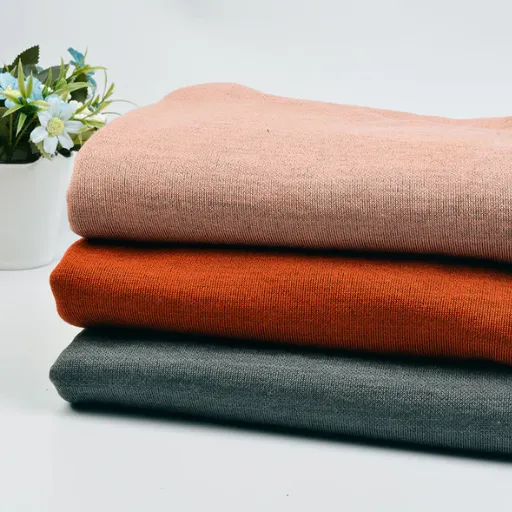
Advantages of Using Acrylic in Textiles
Acrylic fabrics are not only regarded for their flexibility but also for their durability. First and foremost, they are light. The fabric is light; sleeves do not become soggy. Blanket walls will always carry heat. In actuality, when worn indoors or outdoors, acrylic insulates warmth. The melting point of the fiber is at 192°C or 378°F and it ignites at 560°C or 1,040°F< abovementioned. Acrylic dries quickly due to its low absorbance of moisture; acrylic yarns and fibers are washable.
Another important advantage of these materials is that they are highly resistant to fading and weathering. These are hence very popular in outdoor applications like patio furniture, awnings, etc., where sunlight and elements are continuous. The fabric has UV rays resistance and does not fade its color over time; hence the product of the textile will usually have a longer lifecycle.
In conclusion, acrylic textiles will need less care in comparison to most natural fibers. This is because the fabrics are resistant to attacks of moths, mildew, and chemicals, making a more user-friendly, durable choice. The acrylic’s ability to offer an alternative to materials such as wool ends with a luxurious feel at a relatively low price. Such characteristics render acrylics embraceable by various industries, from fashion to home furnishing.
Durability and Maintenance of Acrylic Fabric
The durability of acrylic fabric is well known, with the material being resistant to friction. For products functioning under heavy and repeated use, such as garments, wall upholstery, and outdoor furnishings, acrylic fabric is ideal because of its long-lasting quality. Acrylic fibers are synthetically composed to further protect from sunlight and moisture so that they are less likely to provide the fading or deterioration–in outdoor settings at the very least–that many of these fibers would otherwise experience over time. Acrylic’s mold resistance and resistance to attrition are some other factors that also contribute to its longevity.
Maintaining acrylic is relatively easy, possibly the easiest-to-care-for fabric-albeit it has a peculiar tendency to stretch. Many manufacturers press a “Do Not Iron” demarcation onto the labels, too, which in plain English means that they cannot press these knit fabrics should be allowed to relax gently and naturally on the line. The drying characteristics are superb as well. Acrylic does not retain water for long periods; hence, one would rarely spend a day handwashing them. Generally, acrylic is excellent for those attractions purposely listed for you as easy to clean-resistant to warping and shedding. It was designed for workwear or logos and names to be professionally stitched on. Never overlook product listing and directions, as it may jeopardize the fabric.
In terms of washing, this fabric is actually a bane to many of the cleaning drugs used. With minimal detergent, most dirt can be cleaned out with a little bit of warm water. Distinct instructions on care should always be adhered to. Further, some may argue only softer dry cleaning but this is debated in Colombia. based on field practices.
Environmental impact of acrylic production
The production of acrylic has numerous environmental implications due to the use of synthetic fibers. Acrylic fibers are mainly manufactured from acrylonitrile, a chemical by-product of fossil fuels like crude oil. The extraction of these current resources and their refinement leads to high emissions of greenhouse gas, also exacerbating the aggravation of global climate change. Moreover, their manufacturing processes fall under the significant discharge of energy accompanied by the usage of numerous harmful chemicals that would further pollute the environment if not dealt with correctly.
Water quality in a way, falls under another concern for the acrylic fiber production sector. During the process, toxic residuals, colorants from the dyes, or residue of chemical compounds typically get into the water in waste streams. These are often discharged, untreated, into the environment and pose risks to this living aquatic ecosystem as well as to human communities that are dependent on this water. Waste management and treatment systems have to be effective; however, their application, in differing degrees, is far from widespread in the production additionally lending spice to levels of environmental inflictions
The non-biodegradable characteristic of acrylic contributes to the issue concerning waste. Due to its synthetic essence, acrylic clothing and items can remain in dumps undecomposed for long periods. More when washed, it releases microfibers into water bodies and contaminates them further. These fibers lay around the environment, harming aquatic animals and potentially entering the food chain. Reducing these impacts will require creating a switch to eco-friendly materials and recycling programs.
Frequently Asked Questions (FAQ)
A: Acrylic is made primarily from a type of plastic known as acrylonitrile polymer, specifically polyacrylonitrile. Acrylic is a synthetic fiber, obtained from the materials of petroleum or coal, which means that it is a product of the petrochemical industry.
A: Acrylic fabric is made by polymerizing acrylonitrile, as the outcome of an acrylic filament. Gorgeous textiles are woven or knitted from these filaments for use in various applications, such as clothing.
A: Acrylic fabric is incredibly useful in clothing, upholstery, and home textiles, all being aspects which depend on its inherent strength; it also has versatile applications. Acrylic can emulate wool, posing a good deal of alternatives; this is also prized by persons particularly happy to wear synthetic fibers.
A: The production of acrylic fiber and fabric is considered environmentally adverse, as they are derived from petroleum. Apart from that, manufacturing acrylic substances pollutes and consumes nonrenewable resources in some stages.
A: Yes, acrylic is quite a common synthetic fiber used these days in hair extensions. They can look like natural hair and are available in various colors and textures.
A: Cold water is recommended when cleaning acrylic fabric and using the gentle cycle. High heat on the dryer is a big no-no; it can hurt the fibers. Thus, the proper cleaning tips will do as much as possible to preserve the condition of the acrylic fabric.
A: The active manufacture of acrylic fibers has been necessitated due to the surge in demand for synthetic fibers. Eminent producers/actors, among them the DuPont Corporation, are continuing to offer varieties of this kind of fiber, for use in various industries and end-applications.
A: Acrylic is among the least absorbent fibers that are synthetic and can be unsuited to warm climates for this reason. But it has other positive features – it is light and soft, and the delicate texture makes it resilient to moths. This enables it to be used for many applications just as many other synthetic fibers could.
For decades, giant companies of acrylic fibers include the DuPont Corporation, playing pivotal roles in the development and manufacture of acrylic fibers. They are still advancing in the synthetic fiber industry.
A: Acrylic fabrics are deemed by many to be harmless, but for some people, skin irritations could result from the synthetic nature of the fibers. Be sure to follow up on any ill reactions observed from the use of acrylic-made products.
References
- Sewport: What is Acrylic Fabric – Discusses acrylic fiber fabrics made from synthetic polymers like acrylonitrile, derived from petroleum or coal-based chemicals.
- Xometry: Everything You Need to Know About Acrylic – Explains acrylic (PMMA) as a rigid, transparent plastic used in various applications.
- Acrylite: How is Acrylic Made? – Details the process of making acrylic by reacting methyl methacrylate (MMA) to produce PMMA.
- Revolution Fabrics: What is Acrylic Fabric? – Covers the production of acrylic fabric from petroleum or coal-based chemicals.
- General overview of acrylic materials – Provides insights into the properties and uses of acrylic materials.









